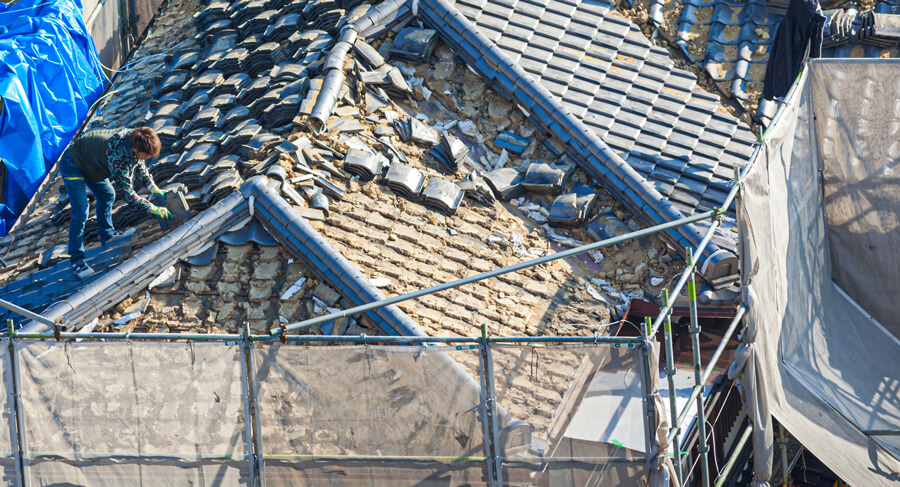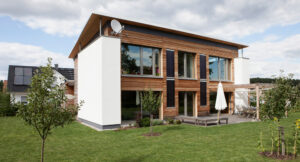Formulations' solutions to dampness and leaks

Periodic inspection of surfaces exposed to the environment and/or water is recommended in order to detect deterioration of construction elements.
The foam from polyurethane of Formulaciones projected onto facing brickwork saves costs and prevents damp problems.
For the waterproofing of terraces, roofs, garages and swimming pools we recommend the use of our polyurethane-based polyurethane membranes. A fast, cheap and effective protection is achieved.
Dampness in walls and ceilings of houses is one of the biggest nightmares of homeowners. The main problem with damp is not the stain on the wall, although this is what users fear most, but the fact that when it appears it can be a symptom that the structure of the house is seriously damaged due to the time that has elapsed before it has been detected, whereas with leaks the opposite is true, they are easy to locate and the possible damage can be dealt with quickly.

This is the type of damp that initially causes the fewest problems, because it is normally caused by a leak or break in one of the pipes that circulate inside the house. As it is a continuous leak, the stain appears quickly and there is not much internal damage. Moreover, it is easy to detect where the leak has occurred and it is repaired by calling a plumber to fix the pipe and a bricklayer to fix the wall if the plumber has had to cut it.

Origin and symptoms
This type of dampness can occur under windows or in walls that have been covered with an object for a long time. The main cause of these dampnesses is condensation and incorrect application of insulation elements and vapour barriers.
This condensation occurs in winter when the temperature inside the house is higher than outside. At that time the water vapour present in the air condenses on a colder surface (walls and the aluminium of the window). The water in these humidities comes from inside the house and not from water seeping in from outside.
Formulation Solutions
The foam from polyurethane is an inert product, permeable to water vapour and impermeable to water, mould will not grow on it. In addition, other elements such as insects and rodents do not find it attractive to eat or nest in.
The appearance of dampness when you have foam from polyurethane as an insulating material is due to the use of water-repellent cappuccino and mortar. The foam from polyurethane The water vapour is allowed to pass through, but when it reaches the cap or mortar, it is prevented from passing outwards. This is why we at Formulations always recommend that you project the foam from polyurethane over the brickwork and saving the cost of cappuccino or mortar.
The solution to this problem requires the wall to be completely removed and put back in place, and this time, the thermal insulation.

This type of dampness appears during the rainy season and occurs when water penetrates the house from the outside. This is due to the deterioration of the material being used as waterproofing on the roof, terrace or deck. It is therefore important to periodically inspect these surfaces for details such as paint lifting, cracks and verdigris that may be indicative of their deterioration.
Although it may not seem like it, the best case is when the leak is very large and a leak occurs. Such large leaks are easy to locate and repair and cause the least damage to the structure of the house.
On the other hand, a dampness may have been acting for a long time until it manifests itself in the roof, with the consequent deterioration of the construction elements. In a house with a wooden beam roof, a dampness may mean that the beam is completely rotten (with the danger of the beam giving way and the whole roof collapsing).
Formulation Solutions
To repair surfaces and prevent the appearance of new dampness, Formulaciones has a wide range of products in its catalogue. polyureas and polyurethane-based membranes polyurethane. These products are ideal for waterproofing roofs or terraces and all those surfaces that can suffer the effects of water (flower boxes, garages, swimming pools, ...).
Polyurethane membranes provide fast, inexpensive and effective protection. It is applied by roller as if it were a paint. Depending on the membrane used and the conditions under which it is applied, it may also be necessary to apply a primer and topcoat.
From our offer, we recommend IMPERFORMA and ACRIFORMA PU 2C for this application.
The polyureas of the UREFORMA family are a more technical solution than the previous one, but without doubt the most recommendable. The professional who applies it will need a suitable spraying machine and knowledge of how to apply it.
In our technical data sheets you can find the method of application and the conditions we recommend to obtain satisfactory results. In addition, our sales representatives and technicians are available to advise you on the use of our products and to offer you the solution that best suits your customer's situation.
Do you need a reliable partner for your project?
Advice for spray foam applicators
625 106 554
Technical assistance
854 805 377



